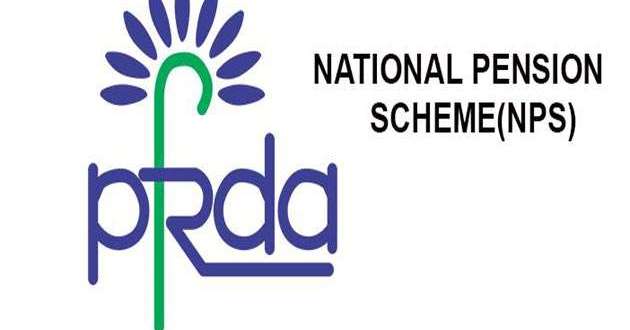In recent times, several developments initiated by the Pension Fund Regulatory and Development Authority (PFRDA) are changing the way the NPS (National Pension System) is structured for the benefit of subscribers. A recent step is the discussion between the Insurance Regulatory and Development Authority (IRDAI) and PFRDA to allow NPS subscribers to port their annuity plans. At present, at the time of vesting of the NPS funds into an annuity, the NPS subscribers get a regular pension from the life insurance company from whom they buy the annuity.
There are 14 life insurers empanelled by the PFRDA who can offer annuity and there is a choice within insurers on the structure of annuities. For instance, annuity could be for life or a limited period, it could also have different frequency of payouts and so on. Effectively, once the subscriber takes an annuity plan, there is no room for any change in the annuity variant or annuity provider. This is a very restrictive practice and barring a window of 15 days to a month provided by insurers where a subscriber can exit the annuity option, there is no flexibility once the choice is made.
Read More: Digital Life Certificate for Pensioners – Ways to apply for and get a Jeevan Praman Patra
With this new proposal, subscribers will not only have the choice to change from one annuity plan to another of a particular insurer, they will be able to move across insurers to select an annuity of their choice. This is a big shift and change in the evolving pension market and it is likely to keep progressing as subscriber experience and circumstances change. The NPS has witnessed several changes in its architecture, scope and benefits since its operational launch over a dozen years ago.
Another favourable development for NPS subscribers is the ease of buying annuity when one exits the NPS. At present, NPS subscribers who superannuate are required to purchase an immediate annuity (excluding the commuted value) from any life insurance company. So, insurers collect the proposal form from those who have completed the NPS tenure to offer them immediate annuity products. The PFRDA also collects a lot of details from subscribers who are in the vesting stage. From now on, the exit form of NPS will be treated as a proposal form for purchasing annuity products.
This move will not only save time, it will also facilitate easy onboarding of NPS retirees for immediate annuity products. With the existing Jeevan Pramaan, the biometric enabled digital service with which annuity recipients can declare their proof of existence, the authentication of life will make the process of shifting from NPS to annuity in a smooth and seamless manner.
Read More: DigiLocker enables users to store health records, link with Ayushman Bharat account; details here
DIGITAL LENDING NORMS
When it comes to lending, often scams, malpractices, mis-selling, data breaches and unethical recovery practices come into light much after they have occurred. To protect customers, the Reserve Bank of India (RBI) recently released digital lending norms. The norms are intended to curb illegal activities, and mitigate concerns arising from credit delivery by digital platforms. The new rules are only applicable to RBI-regulated entities and loan providers. It mandates platforms to disclose all-inclusive cost of digital loans to borrowers and bar the lenders from automatically increasing credit limits without the borrower’s consent. Several third-party platforms often do not have products offered by all insurers, making it a task for buyers to search for products individually
These norms are necessary to protect the interest of the borrowers and to ensure that the money cycle is taking place through legitimate platforms. Further, proper KYC should be in place and audit mechanism to ensure fair practices are followed. The entities engaged in digital credit delivery have time till November 30 to comply with the norms for existing digital loans. For new as well as existing customers availing fresh loans, the norms will be applicable with immediate effect.
This is not the first time the RBI has raised concerns over digital lending platforms. In June 2020, it had come out with a note on digital lending and had advised that digital lending platforms will disclose the name of bank or NBFC on whose behalf they are providing credit upfront. To ensure clarity of which entity was underwriting the loan and if it was being regulated, digital lending was brought under regulations. It also made NBFCs and banks, which had allowed such loans through platforms, accountable as they could not claim oversight when it came to malpractices.
IRDAI MOOTS DIGITAL PLATFORM
The IRDAI has proposed to set up a digital platform for sale of all types of insurance products. Tentatively named Bima Sugam, the idea behind the move is to make policy buying easy, convenient and also cut commissions. The platform would be fully digitally-enabled to have electronic forms, digital transactions and dematerialisation of policies.
At a time when every insurer has a digital arm and there are several third-party aggregator websites that sell insurance, this move by the regulator is likely to have products from all insurers. Several third-party platforms often do not have products offered by all insurers, making it a task for buyers to search for products individually. But, for a late entrant, there would be stiff competition from existing platforms, brokers and web aggregators who have been offering such services successfully for a longer period.
However, a differentiator would be lower commissions paid out on products sold from this platform, as all insurers would be directly selling on this platform. Policyholders directly dealing with the regulator-promoted platform would be able to evade nosy agents and relationship managers, who keep chasing people to sell a policy and later spam them by offering more products. Prospective policy buyers can look forward to this development which is in their favour.



































